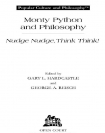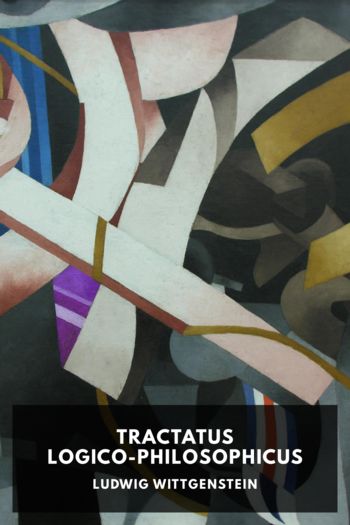Monty Python and Philosophy, Gary Hardcastle [portable ebook reader TXT] 📗

- Author: Gary Hardcastle
Book online «Monty Python and Philosophy, Gary Hardcastle [portable ebook reader TXT] 📗». Author Gary Hardcastle
Suppose You Were Attached to a Dead Parrot: The Role of Thought Experiments
How do we isolate our judgments about particular cases? Usually we are not so lucky as to be forced by a disc jockey to think things through. There are several methods of isolating our particular judgments, but I am going to focus on one of the most prominent, what philosophers call the thought experiment. Thought experiments tend to be very unrealistic inventions, in which the theorist imagines a situation in which implementing a principle has an unacceptable consequence, or in which two judgments that we previously thought were consistent in fact conflict. Often the thought experiment is supposed to be analogous to a real life case in all relevant respects, but shows up the inapplicability of some judgment to the real-life case. The most famous, and in my view the greatest, thought experiment in moral philosophy is Judith Jarvis Thomson’s “violinist” case, in her article “A Defense of Abortion.”26 Thomson makes an analogy between the case of abortion in which the prospective mother has conceived as a result of rape, and the following case: a famous violinist is dying of a rare blood disease, which can only by cured by having you (the reader) hooked up to him for a certain amount of time (say nine months) so that he can use your body to cleanse his liver. No one else will do—because, say, you and he are the only people in the world with a certain blood type. A Society of Music Lovers takes it upon itself to kidnap you and hook you up to the violinist. When you awake you find yourself able to unhook yourself and walk away. Thomson asks whether the violinist has the right to your body in this manner, and assumes that most of her readers will say “no.” But, she says, what is the difference between this case and the case of abortion, where the pregnancy arose from rape? The prospective mother is being used by the fetus, and only she will do for its purposes. She is not in that situation out of choice: she was forced into it by someone else (not, admittedly, the fetus, but nor did the violinist force you into being hooked up to him). So, abortion, at least in the case of rape, is not wrong.
Thomson deploys other thought experiments to show that abortion is permissible in a much wider range of cases, but I want to focus on what this, very limited, thought-experiment actually shows. When I teach Thomson’s article I find that most of the students who oppose abortion are not persuaded that there is anything acceptable about abortion. But in fact Thomson’s article is less directed at showing there is a right to abortion than to showing something quite different: that whatever is wrong with abortion has nothing to do with the right to life of the fetus. Whereas supporters and opponents of abortion rights frequently argue over whether the fetus has a right to life, Thomson concedes at the start that it does. Her thought-experiment is so striking because the violinist, who is supposed to be analogous to the fetus, is an adult, with all the rights and moral standing that adults typically have. When we say that we are entitled to walk away from the violinist, we do so in the knowledge that he is an adult who certainly has a right to life, and that he will die if we walk away, and, crucially, that even though he will die we will not be violating his right to life. Opponents of abortion believe the fetus has a right to life, and that the violinist has a right to life. They are not forced by Thomson’s thought experiment to give up the view that abortion is wrong, even in the case where pregnancy arises from rape. But, if they want to say that it is permissible to walk away from the violinist, they are forced to look for some other grounds than the right to life of the fetus for justifying the wrongness of abortion. In my own experience I find that students are, like Mr. Vibrating, quite ingenious. They can almost always find other grounds for supporting what they believe, but what they have given up is the central slogan of the anti-abortion movement: “right to life.” Sure, fetuses have rights to life, but that cannot be why abortion is wrong.
I’ve dwelled on this example, because it neatly displays both the power and the limits of thought-experiments. Good thought experiments are powerful because they can force us to interrogate judgments we had previously simply assumed, and show them to be groundless. But they are also limited. By themselves they do not support substantive conclusions about what is right and wrong, but only show that certain kinds of reasons support (or fail to support) such conclusions.
Moreover, we have to recognize that individually and collectively we are subject to all sorts of biases and prejudices that we cannot readily





Comments (0)